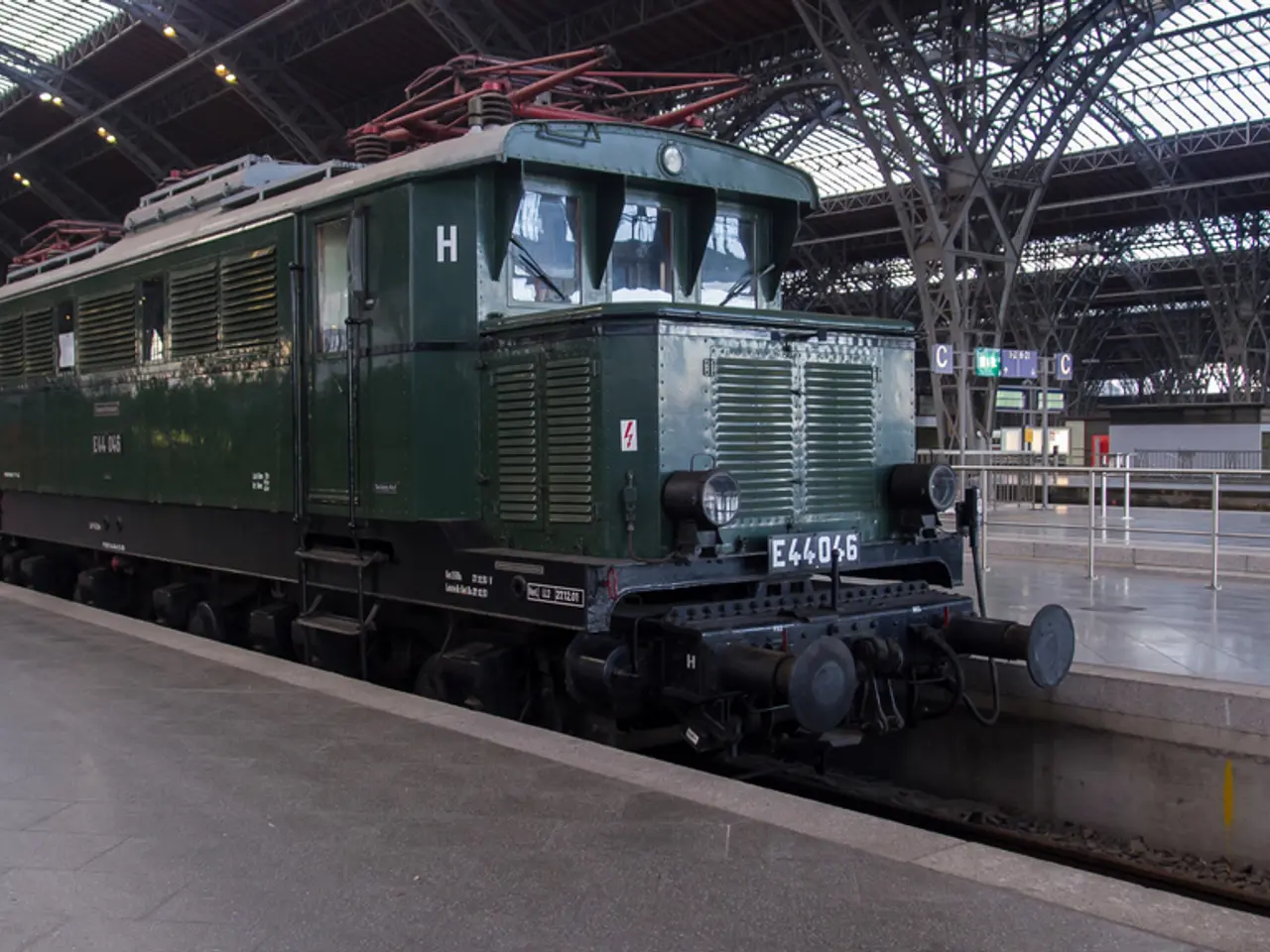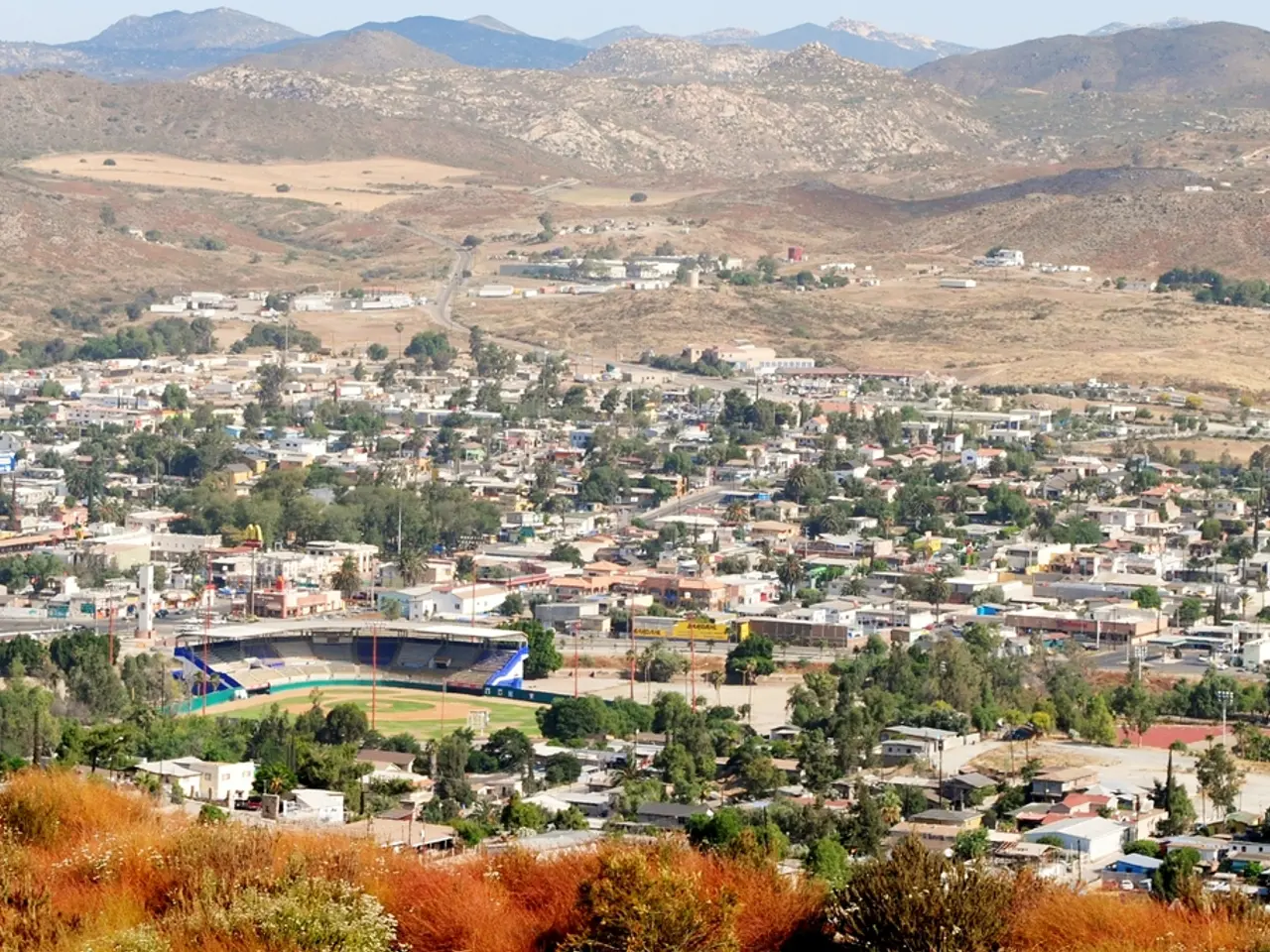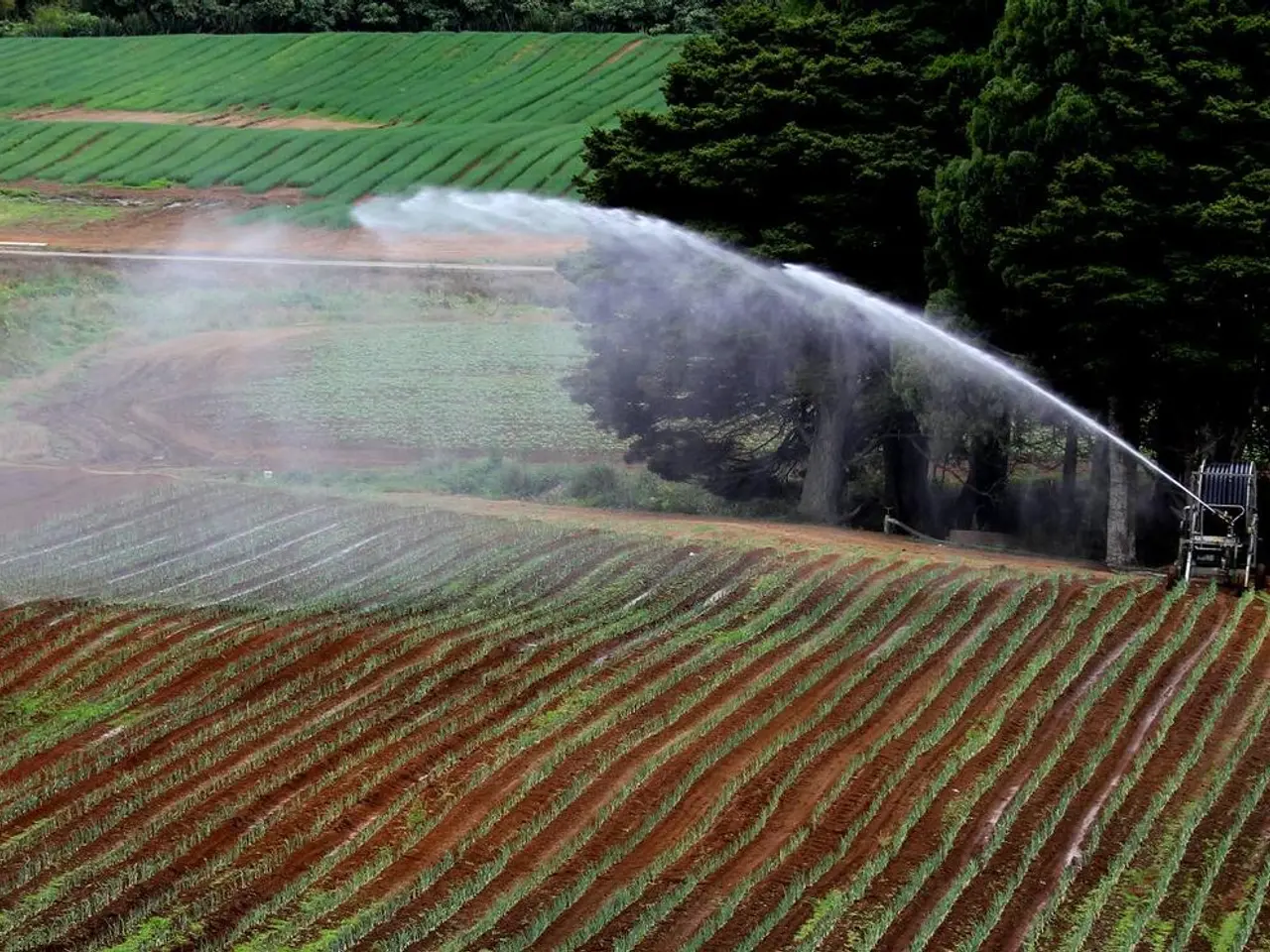Freight Train Project of Indian Railways: Introducing 'Rudrastra', a 4.5 kilometer long vessel for bulk cargo transportation
India's Longest Freight Train, 'Rudrastra', Sets New Standards in Logistics
India's logistics sector has taken a significant leap forward with the successful operation of 'Rudrastra', the country's longest freight train. This 4.5 km long train, consisting of 354 wagons and driven by seven locomotives, departed from Ganjkhwaja station in the DDU Division on August 7 [1][2][3][4].
Efficiency and Cost Savings
By combining six rakes into a single train, the Railways can cut down on time, manpower, and operational expenses. Running 'Rudrastra' instead of six separate trains will save substantial manpower and operational costs that individual shorter trains would incur [2]. This consolidation also reduces fuel consumption per ton of freight.
'Rudrastra' improves freight capacity and throughput, enabling faster movement of goods over long distances. During its journey, the train covered 200-209 km in about 5 hours at an average speed of ~40 km/h, demonstrating that long trains can maintain adequate speeds on existing infrastructure [1][3][4].
Development of the Logistics Sector
The training and technical coordination required for operating such a long train reflect an advancement in Indian Railways’ technical expertise and infrastructure capabilities. This elevates India’s rail freight to more world-class standards, supporting economic growth by streamlining goods transportation in a country with growing freight demands [2][3][4].
Resource Optimization
Fewer train trips to transport the same volume of goods lead to reduced wear and tear on assets and lower congestion on rail networks, allowing better utilization of infrastructure and reducing delays.
A New Era for Indian Railways
'Rudrastra' represents a major step forward for Indian Railways by enhancing cost-effectiveness, operational efficiency, technical proficiency, and capacity expansion in freight transport. This will positively impact India's broader logistics and supply chain sectors [1][2][3][4].
Union Railway Minister Ashwini Vaishnaw shared a video of the train on X (formerly Twitter) with the caption, "'Rudrastra' - Bharat's longest freight train (4.5 km long)" [5]. He also announced that India's first bullet train service is set to start soon, aiming to slash Mumbai-Ahmedabad travel time to 2 hours [6].
The successful operation of "Rudrastra" reflects "better working capacity, coordination between departments and good management of DDU division" [7]. As 'Rudrastra' continues to pave the way for longer, more efficient freight trains, it is clear that the future of India's logistics sector is bright and full of potential.
[1] India Today [2] The Hindu [3] Business Standard [4] NDTV [5] Financial Express [6] The Times of India [7] Economic Times
- The development and successful operation of 'Rudrastra', India's longest freight train, indicate a boost in the logistics sector's efficiency, particularly in finance and resource optimization, as fewer train trips reduce congestion and wear on assets, maximizing infrastructure utilization.
- By setting new standards in logistics and streamlining goods transportation, long freight trains like 'Rudrastra' will likely propel India's railway industry forward, contributing to the overall growth of the finance industry by reducing manpower, operational costs, and travel times.
- As the future of Indian Railways embraces longer, more efficient freight trains, the transportation sector is poised to experience significant advancements, given the expected positive impact on logistics and supply chain sectors - a trend supported by improvements in technical proficiency and capacity expansion.




